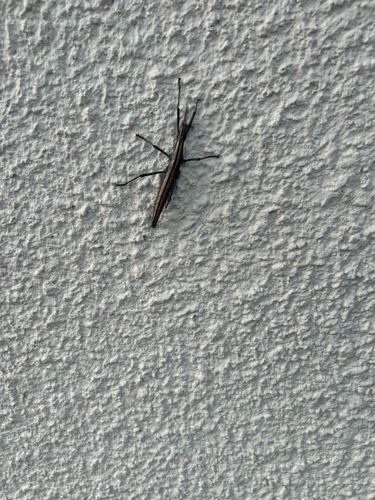Stick Insect, Walkingstick
Scientific Name: Phasmida (Order)
Order & Family: Order Phasmida, various families (e.g., Phasmatidae, Diapheromeridae)
Size: Most commonly 1.2 to 12 inches (3 to 30 cm) long, but some species can exceed 20 inches (50 cm).

Natural Habitat
Typically found in tropical and subtropical regions, often camouflaged on trees, shrubs, and other vegetation where they feed. Some species can be found in temperate zones.
Diet & Feeding
Herbivorous, feeding primarily on leaves from various plants. Their diet varies by species and geographical location.
Behavior Patterns
Master of camouflage, remaining still during the day to mimic twigs or leaves. They are primarily nocturnal, moving and feeding at night. When threatened, they may sway to imitate vegetation moving in the wind, drop to the ground, or some species can emit foul-smelling sprays or display bright warning colors.
Risks & Benefits
Generally harmless to humans; they do not bite or sting. In some agricultural contexts, large populations can cause defoliation, but this is rare. Ecologically, they are important herbivores and a food source for various predators like birds and spiders. Their camouflage is a classic example of adaptation in the animal kingdom.
Identified on: 10/9/2025